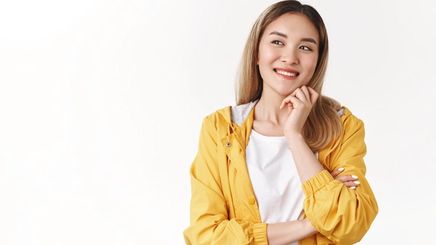
The popularity of hair bleaching has skyrocketed recently because of the big blonde hair trend. (Billie Eilish, amirite?) It’s also so much easier to purchase hair bleaching products and tools online. But with all this access comes a catch — so many people are ending up with botched dye jobs and brittle, peroxide in the process. On top of this, Filipinos have dark brown to black hair that is much more difficult to lighten, increasing the chances of less-than-stellar results.
While we still recommend going to a professional stylist for such a treatment, we can’t stop you from doing it yourself if you're willing. So, to help make the process easier and painless for you, we interviewed hair expert Lourd Ramos on the dos and don’ts of bleaching your hair at home and how to take care of it after.
Do Protect Yourself
There is a reason stylists don’t encourage DIY hair bleaching: it’s dangerous. Lightening your hair with bleach can mess with your skin, leading to , soreness, and burning. It can break your scalp and cause real damage to your hair, including , , breakage, and . On top of that, you could end up with a horrible bleach job.
Lourd Ramos emphasizes that while bleaching hair at home is highly discouraged, there are some precautions you could take to protect yourself.
“The most important precaution is don’t bleach alone because the application has to be done simultaneously, so your hair lightens evenly,” he explains, adding that you need an arsenal of items apart from bleach, such as petroleum jelly for your ear lobes and nape, a pair of gloves for you and your partner, a wide-tooth comb, a towel, or large garbage bag that you can use as a cape, and baby powder.
Lourd recommends that applying the latter on your scalp can protect your hair’s natural oils.
Do Follow the Proper Procedure
You might be tempted to take a shortcut and use a higher volume developer — don’t. Going straight to a high-volume developer, especially if you’re bleaching your hair for the first time, can damage your hair and scalp. Lourd recommends starting with a 20% volume mixing developer that lifts hair color by one to two levels to avoid pain. “Start applying the bleach midway to avoid yellow roots. You need to apply the bleach all over your hair for no more than 35 minutes. This is where a buddy comes in handy,” Lourd explains.
Shampoo your hair with purple shampoos, like TRESemmé Pro-Color Series Blonde Brilliance Shampoo, which features MicroMoisture Technology with violet pigments that neutralize brassiness. Do not scrub your scalp. “Mix in 30% developer to lighten hair to the next level. Keep the mixture away from the scalp. Again, use purple shampoo and to rinse.”
If you want to go even lighter, Lourd warns you to wait 24 hours before bleaching again to avoid scalp damage and .
Don’t Skip the Post-Bleach Care
Bleach damages hair, so you would need to give your new blonde ‘do . Try alternating a deeply nourishing shampoo with TRESemmé Total Salon Repair Shampoo, which has macadamia oil and Ionic Complex to repair years of damage, prevent hair fall, and strengthen hair. Follow up with TRESemmé Total Salon Repair Conditioner to nourish your bleach hair daily.
Once a week, wrap your hair in a deeply moisturizing mask like Creamsilk Triple Keratin Rescue Ultimate Straight Crème, to get rid of frizz and boost shine, which are common issues with bleached hair. When your hair starts getting brassy, give it a blonde boost with TRESemmé Pro-Color Series Blonde Brilliance Shampoo and TRESemmé Pro-Color Series Blonde Brilliance Conditioner. Lourd recommends leaving the shampoo and conditioner on for three minutes to remove all the brassy tones.
Hair bleaching is not for the faint of heart, and it’s definitely not something that you do alone. So, grab a buddy, follow the advice above, and follow your blonde ambitions.
Wondering which is the most flattering blonde for you? Read our article on